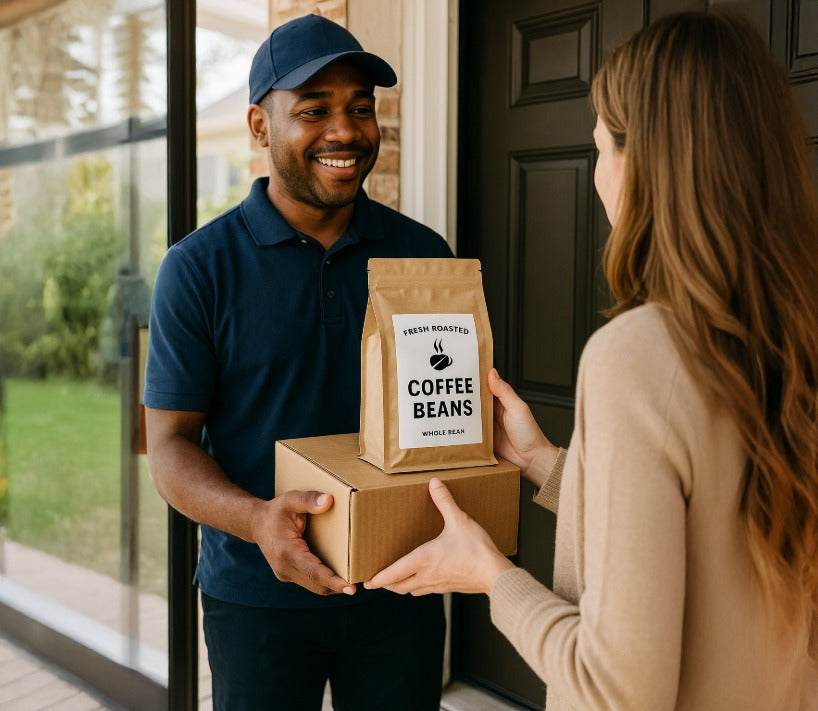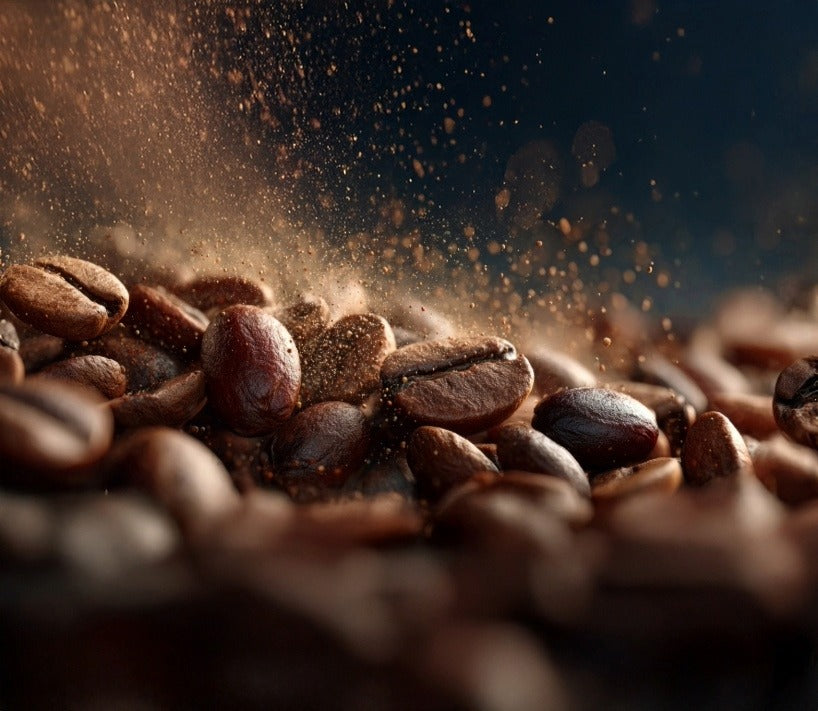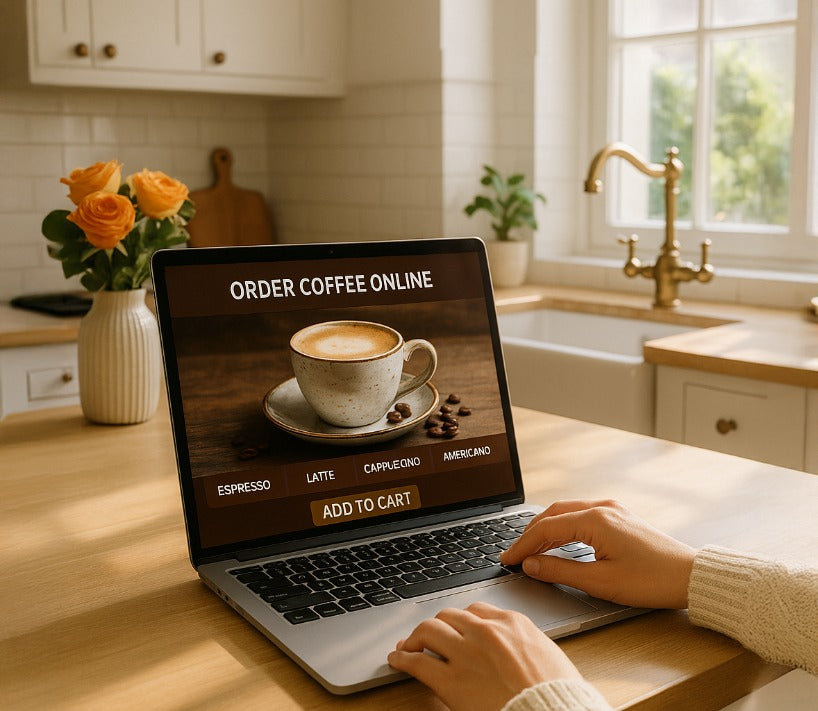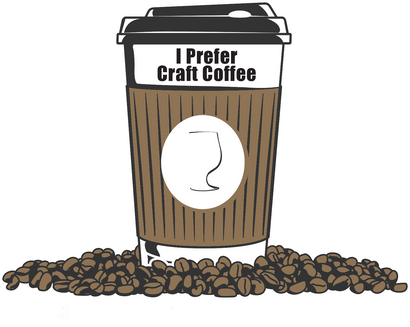Freshest Craft Coffee Online: Why Espresso Doesn’t Need to Wear a Dark Roast Tuxedo
June 16, 2025 4 min read
Freshest Craft Coffee Online: Why Espresso Doesn’t Need to Wear a Dark Roast Tuxedo
Ever wondered why “espresso” still gets pigeon-holed into the darkest corner of the roasting spectrum—especially when you’re hunting for the freshest craft coffee online and craving something brighter than a Pixar movie? Spoiler alert: the myth that espresso must equal dark roast is about as outdated as dial-up internet. Today we’re busting that myth, poking gentle fun at it, and giving you the roast-to-flavor roadmap you’ve been missing.
1. Wait—Does Espresso Really Mean Dark Roast?
Picture this: you walk into a café, ask the barista which beans they pull for espresso, and they whisper back, “Our darkest—because that’s what espresso is.” Cue eye-roll. The truth? Espresso is a brew method, not a roast level. All it asks is 9-ish bars of pressure and a cozy ~25-30-second extraction. Your beans can be light, medium, dark, or dressed as a pumpkin spice latte for all espresso cares.
A Quick History Nobody Asked For (But Totally Helps)
-
Early 1900s Italy: Roasters aimed for consistency with limited tech—dark roast hid defects nicely.
-
Mid-century America: We inherited “blacker-is-better” because shipping lighter roasts across oceans tasted…uh…savory in all the wrong ways.
-
Third-Wave Era: Roasters dialed in lighter profiles (hello top specialty coffee online) and realized acidity can sing, not screech, in espresso form.
Bottom line: Dark roast was convenient, not mandatory. Once we figured out how to source high-grade beans and roast precisely, the flavor doors flew open.
2. Roast Levels & Espresso: A Flavor Choose-Your-Own-Adventure
Below is a no-jury, no-shame comparison of how different roasts behave under 135 pounds of pressurized water. Use it as your cheat sheet when you shop the best craft coffee at home selections or pick the best coffee subscription online.
| Roast Level | Flavor in Espresso | Acidity | Body | Who’s It For? |
|---|---|---|---|---|
| Light (City) | Bright citrus, berries, floral notes—that “fruit bomb” your palate parties for | High, lively | Light-medium | Adventurers who sip espresso sans sugar and shout, “Taste the rainbow!” |
| Light-Medium (FullCity) | Sweet red fruit, caramel, cocoa nib; balanced sparkle | Medium | Medium | Folks chasing nuance but still wanting a touch of comfort |
| FullCity+ (my go-to “Middle-Earth”) | Dark chocolate, toasted almond, brown sugar—and still room for origin character | Low-medium | Medium-full | Fence-sitters who demand bold body and hints of terroir |
| Dark (Vienna/French) | Smoky, roasty, molasses, a pinch of bitterness | Low | Full | Traditionalists who like their espresso to punch them awake |
(Yes, the table looks like Gandalf drew it on parchment, but it’s handy.)
Why I’m Team FullCity+ for Espresso
Think of FullCity+ as the Goldilocks zone:
-
Enough development to caramelize sugars → creamy body, chocolate vibes.
-
Enough restraint to protect varietal quirks → ripe stone-fruit swing-dance on your tongue.
-
Extraction flexibility → forgiving for newbies dialing in grinders at home.
When you’re paying for the freshest craft coffee online, you deserve a shot that shows off your beans’ passport and gives you that big, satisfying hug.
3. Bright vs. Bold: How to Dial In Any Roast for Espresso
(Retain meets actionable tips—prepare for mini homework)
For Light & Light-Medium Roasts
-
Higher Brew Temp: 200–203 °F helps you dissolve those stubborn light-roast sugars.
-
Longer Pre-Infusion: 6–10 seconds wets the puck, curbing channeling.
-
Finer Grind: Counteracts lighter beans’ density, slows flow for proper extraction.
-
Yield: Try a 1:2.5 ratio (e.g., 18 g in → 45 g out) for a “Long Black-Adjacent” shot that still pops.
For FullCity+
-
Classic 1:2 Ratio: 18 g in → 36 g out in ~28 s. Simple, reliable.
-
195–198 °F Water: Keeps sweetness while muting bitterness.
-
Medium-Fine Grind: You get syrupy body without a chokehold on your machine.
For Dark Roasts
-
Lower Temp: 190–192 °F avoids burning oils.
-
Coarser Grind: Dark beans are brittle; too fine = over-extracted ashtray.
-
Shorter Shot: 1:1.75 yields concentrated, heavy syrup—ideal for milk drinks.
(See? No roast left behind.)
4. But Isn’t Dark Roast Easier for Latte Art?
True, darker roasts emulsify with milk like a Netflix rom-com couple: quick chemistry. Yet lighter lifeforms can frolic in milk too—think strawberries ‘n’ cream vibes. You may need to tweak milk temp (slightly cooler) to preserve brightness, but the payoff is a strawberry sherbet latte instead of “generic hot chocolate latte #937.”
5. The Freshness Factor (And Why Online Beats Grocery Shelves)
You found this blog while Googling the freshest craft coffee online—smart move. Supermarket beans labeled “espresso roast” often sat lonely in warehouses for months. Stale dark roast tastes like pencil shavings. A top specialty coffee online roaster timestamps every batch like it’s the Declaration of Independence. Whether you snag a Tanzanian light roast or a Guatemala FullCity+, you’ll taste the difference when your beans land at your door days, not months, post-roast.
6. Putting It All Together—Your Espresso Flavor Toolkit
-
Pick Your Flavor Goal
-
Lemon-berry fireworks? Light roast.
-
Chocolate-hazelnut comforter? Dark roast.
-
Yin-yang harmony? FullCity+.
-
-
Buy Fresh (Obviously)
-
Look for roast dates within 7–14 days, vacuum-sealed or valved packaging.
-
-
Dial In Methodically
-
Adjust grind > tweak yield > nudge water temp. One variable at a time, detective.
-
-
Taste, Log, Repeat
-
Keep a simple journal: dose, yield, time, tasting notes. You’ll connect roast to results quickly.
-
-
Ignore Roast Snobs
-
Espresso is democratic. If you love your shot, you win. Period.
-
7. Espresso Roast FAQ
Does espresso require a special “espresso roast”?
Nope. Espresso just needs pressure; roast level is your flavor canvas.
Why do cafés often use dark roast for espresso?
Consistency and efficiency. Dark roast hides bean flaws and is forgiving under high volume, but it’s not a universal rule.
Can I pull a light-roast espresso at home without expensive gear?
Yes. A quality burr grinder and temperature-stable machine (or even a decent manual lever) plus patience will get you there.
Is FullCity+ the same as medium-dark?
Close. FullCity+ sits between a classic medium and dark roast—surface oils just begin to appear, caramelization is peak, but the bean isn’t charcoal.
How soon after roasting should I use beans for espresso?
Generally 5–14 days post-roast gives you degassed but still vibrant beans.
8. TL;DR—Your Takeaway Shot
Espresso ≠ dark roast. Use whatever roast level suits your flavor mood—light for fruit fireworks, dark for smoky swagger, and FullCity+ for the sweet spot. Buy the freshest craft coffee online, dial in thoughtfully, and ignore anyone who says you’re “doing it wrong.” After all, the only wrong espresso is the one you never drink.
Now go forth, espresso explorer, and may your crema be ever plush and your roasts forever fresh.
Also in Best Coffee To Buy Online Education

Best Fresh Roasted Coffee Delivery Online
November 28, 2025 4 min read
I roast the best tasting coffee at home for you! I use 100% electric equipment, so no hydrocarbons here. Best fresh roasted coffee delivery starts with high-scoring specialty coffee online.

Which Roaster Makes Better Coffee: Gas or Electric?
November 27, 2025 4 min read
Why electric drum roasters produce cleaner, sweeter, more consistent coffee—especially the kind you want when buying fresh roasted coffee beans online or trying to make the best tasting craft coffee at home.

Biggest Coffee Buying Mistake at Home
November 26, 2025 4 min read
Learn why the roast date matters and how to buy fresh, high-quality specialty coffee online. No guesswork when you order coffee online with me. I only stock, roast, and process the best tasting craft coffee at home. I am YOUR personal roaster.
